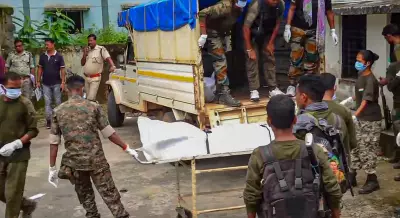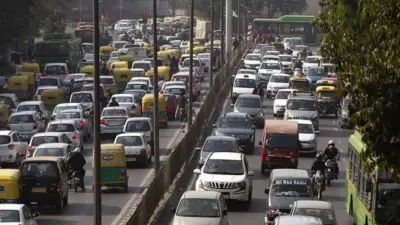Politics
3 Naxalites, Including Woman, Killed in Sukma Encounter with Security Forces
A woman among three Naxalites was killed in an encounter with security forces in Chhattisgarh's Sukma district on December 18. Police confirm the operation was based on specific intelligence.
Business
Delhi HC Seeks Customs Reply on IndiGo's Rs 900 Crore Duty Refund Plea
Delhi High Court directs customs authorities to respond to IndiGo's petition seeking a refund of over Rs 900 crore in import duty. The case involves aircraft engines and parts. Read the latest developments.
World
Bangladesh Erupts in Violence After Leader's Death; Dhaka Streets Turn Into War Zone
Bangladesh faces nationwide unrest following the death of leader Osman Hadi. Protests target media, offices, and diplomatic sites. Anti-India sentiments surge ahead of crucial 2026 elections. Read the full report.
Entertainment
Arjun Kapoor's Bollywood Evolution: 7 Films That Shaped His Career
Explore Arjun Kapoor's cinematic evolution from 'Ishaqzaade' to 'Singham Again'. Discover how his roles showcase versatility in Bollywood. Read the full analysis.
Sports
Lifestyle
Health
Viral Kickboxing Video: Army Vet's Fitness Stuns Internet
A 61-year-old retired Lieutenant Colonel's intense kickboxing routine goes viral on X, drawing playful Mahatma Gandhi comparisons. Discover the story behind the fit veteran's discipline.
Diabetes Cases Projected to Reach 900 Million by 2050
New projections warn diabetes cases could hit 900 million globally by 2050, driven by modern lifestyles. Learn the causes, impacts, and prevention strategies to combat this silent pandemic.
Delhi roads see less traffic after GRAP-4 implementation
Delhi government reports a significant reduction in vehicular movement following the imposition of GRAP-4 anti-pollution measures. Read the full impact assessment here.
Six Kids Get HIV from Tainted Blood in Satna; 3 Suspended
Madhya Pradesh govt suspends three, including blood bank in-charge, after six children contract HIV via transfusion in Satna. Read the shocking details and official action.
David Caprio's Skin Cancer Scare: A Vital Warning
David Caprio, son of Judge Frank Caprio, shares a chilling skin cancer biopsy story. Learn about skin cancer risks, types like melanoma, and crucial prevention tips to protect yourself and family.
Technology
Get Updates
Subscribe to our newsletter to receive the latest updates in your inbox!
We hate spammers and never send spam










































